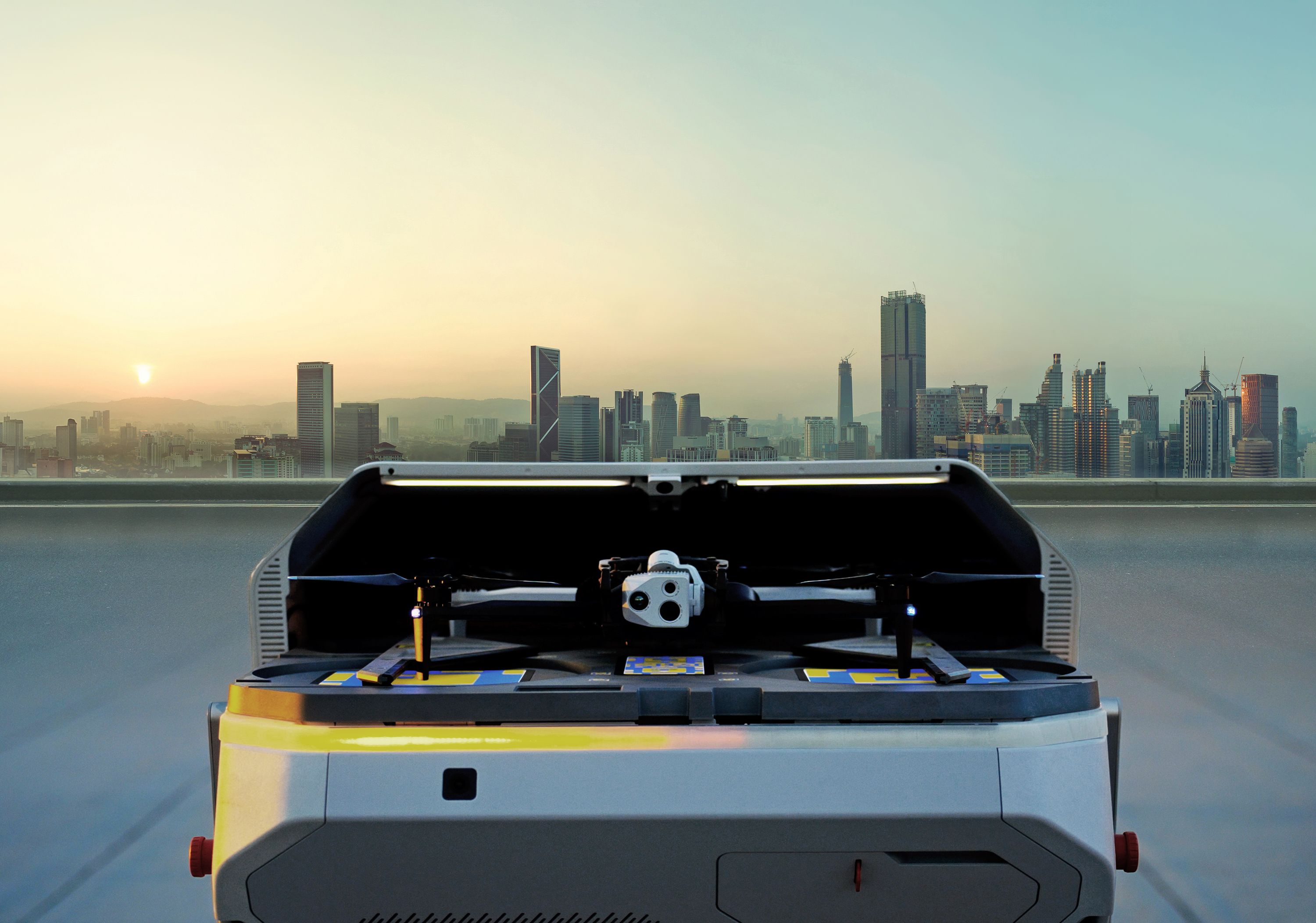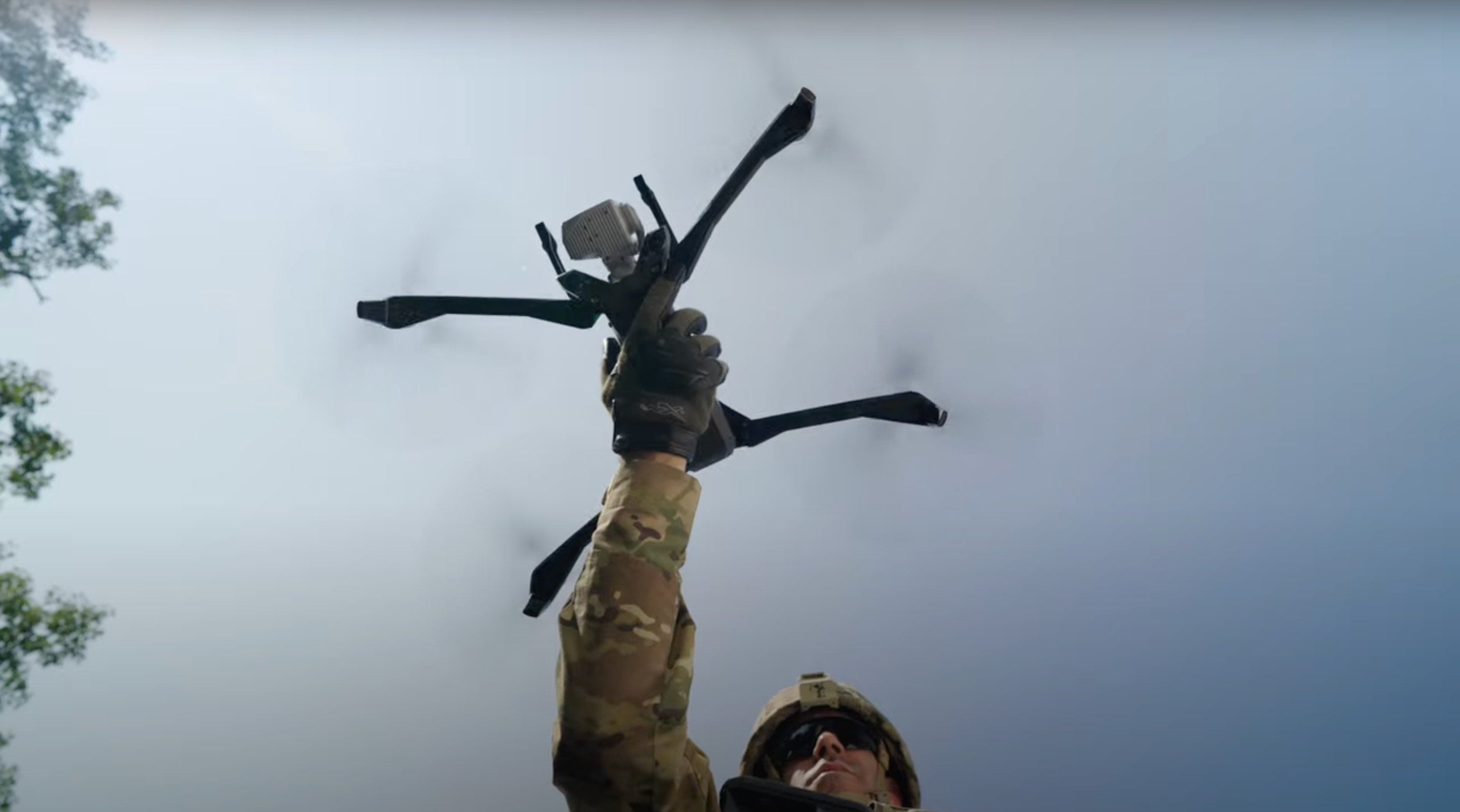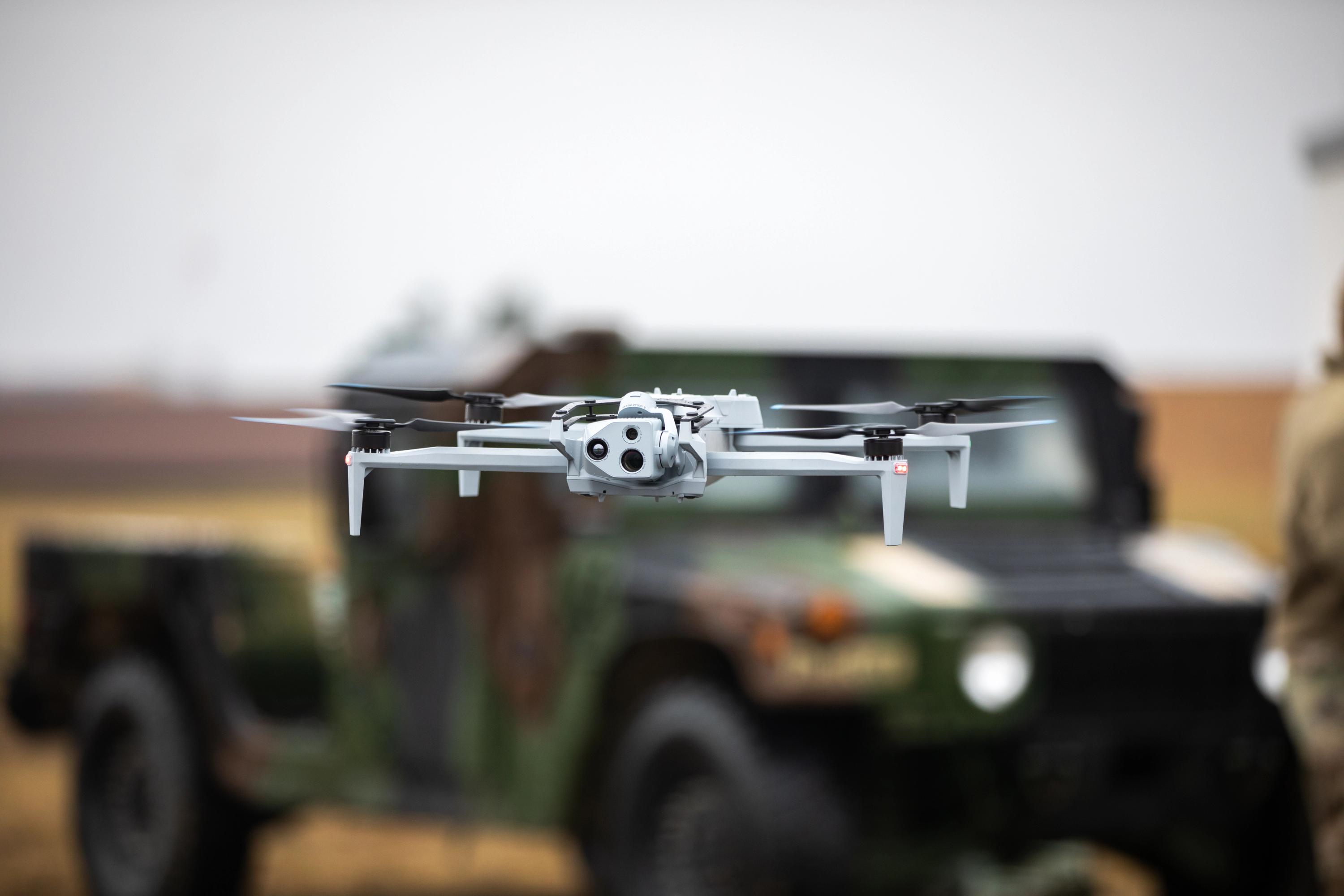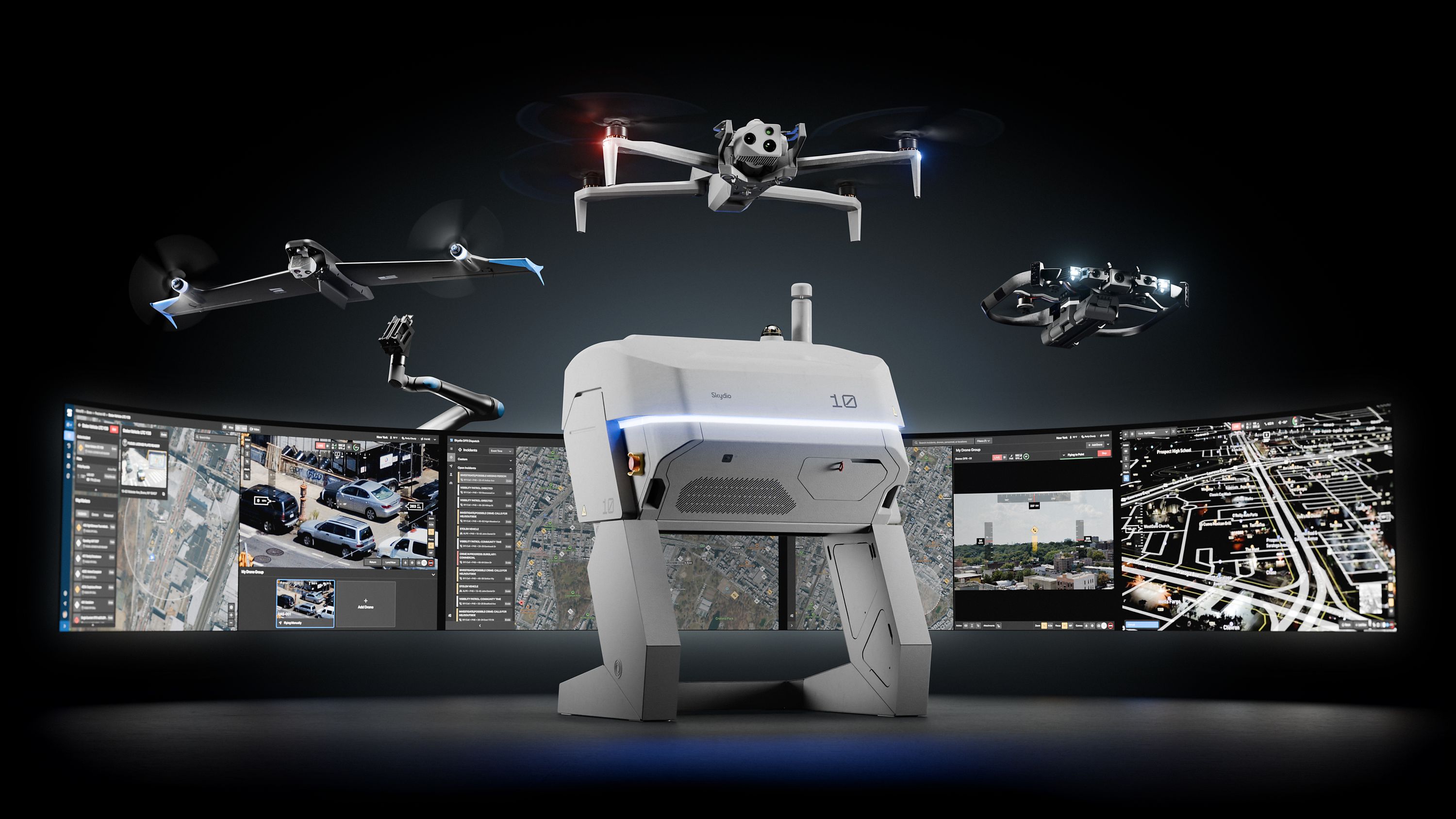How to Launch Your Government Drone Program
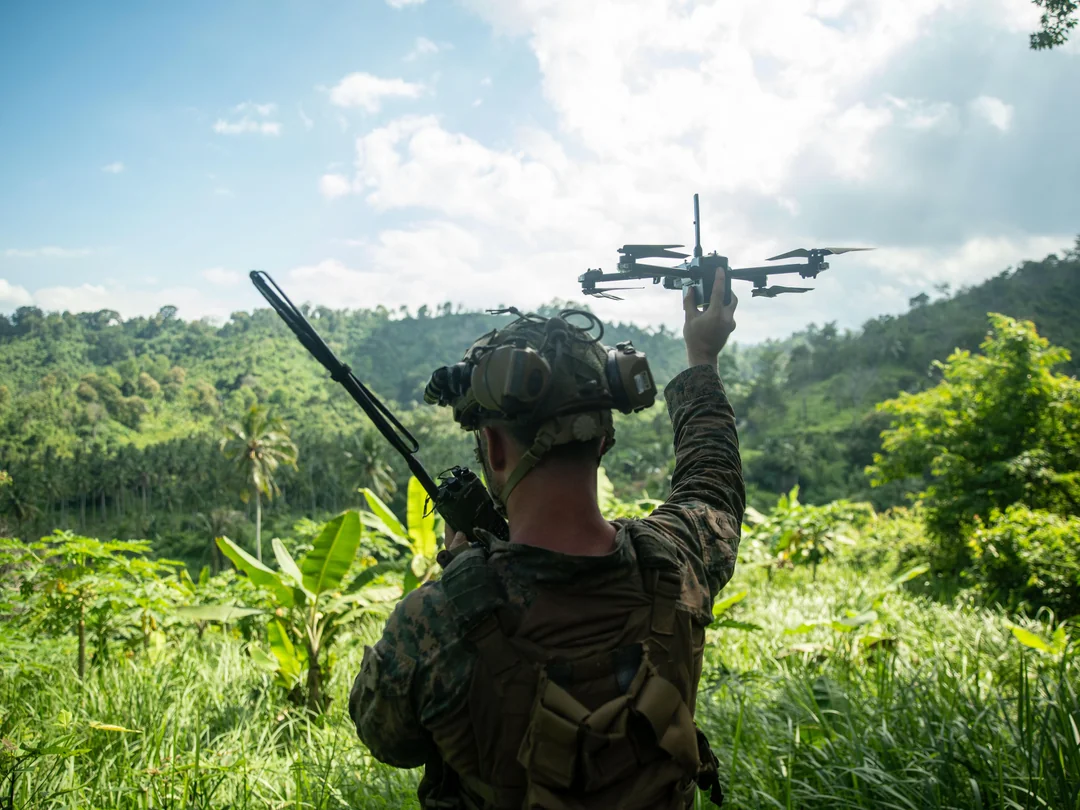
Skydio’s guide to UAS integration and procurement
Technology is shaping the way we defend and protect our communities. Integrating uncrewed aerial systems (UAS) into government and military operations is becoming essential. As a leader in autonomous drones, Skydio offers a range of public sector and defense drone programs tailored to meet the needs of various agencies worldwide.
This guide will walk you through the launch of a government drone program and procurement options and highlight the benefits and some examples from Skydio’s existing defense programs.
Increasing the use of drones in defense and public safety
The use of drones in defense, public safety, and public utilities is rapidly growing worldwide. In the United States, the Department of Defense's budget for drone technology has steadily increased, reflecting its commitment to enhancing capabilities through autonomous systems. For first responders, the adoption of drones has surged by 82% over the past three years, providing critical support in emergencies and natural disasters. Similarly, public utilities are increasingly leveraging drones for infrastructure inspections. This increasing adoption underscores drones' critical role in supporting human-machine teams, enhancing performance and accuracy, and ultimately making operations safer and more effective across various sectors.
Defense budgets have unique challenges and opportunities, particularly with Unfunded Requirements (UFR). These additional needs arose during the fiscal year and were not included in the original budget. Skydio is here to help you make the most of your available budget by providing solutions that deliver maximum value. Investing in advanced drone technology can be a strategic move to address UFR, ensuring that your expenditure translates into superior operational capabilities.
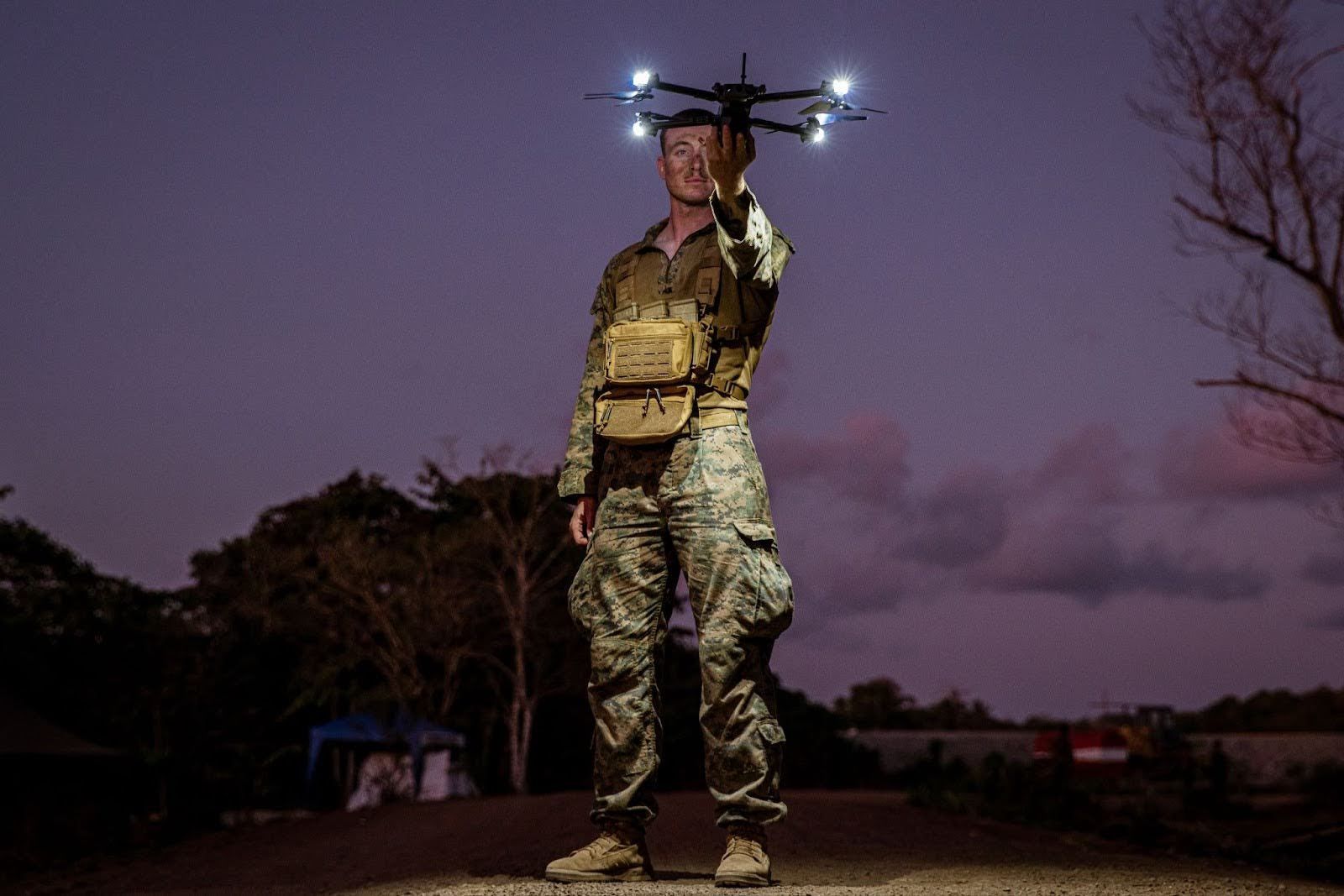
Applications for defense and public sector drone programs
Defense operations
Drones support a range of military applications, including reconnaissance, target acquisition, and battle damage assessment. Advanced drones, such as Skydio X10D, also provide autonomous capabilities that allow for persistent surveillance and intelligence gathering, 24x7 operations, autonomous flight in zero-light environments, fully automated data capture with 3D Scan, flight control by web browser from anywhere in the world via onboard 5G and Remote Flight Deck, and 1-operator-to-many-drone controls.
Base security
Drones enhance base security by providing continuous perimeter surveillance, detecting potential threats, and ensuring the safety of personnel and assets. Their ability to operate in low-light conditions and adverse weather and quickly scan dead zones or areas that are difficult for security force personnel to reach makes drones indispensable for 24/7 security operations.
Law enforcement and public safety
For first responders, Skydio drones offer rapid deployment and real-time situational awareness during emergencies. They assist in search and rescue operations, disaster response, situational assessments, de-escalation, overwatch, improving response times, operational effectiveness, and more.
Public utilities and critical infrastructure
Skydio drones are extensively used to inspect critical infrastructure, such as power lines, bridges, and pipelines. Their high-resolution cameras and advanced sensors detect faults and damage, ensuring timely maintenance and repairs, thus preventing service disruptions. This same level of inspection can be directly applied to improving mission capability for aircraft, ships, and other large-scale fleets that require regular maintenance.
Types of agencies using drones for Defense and Public Safety operations.
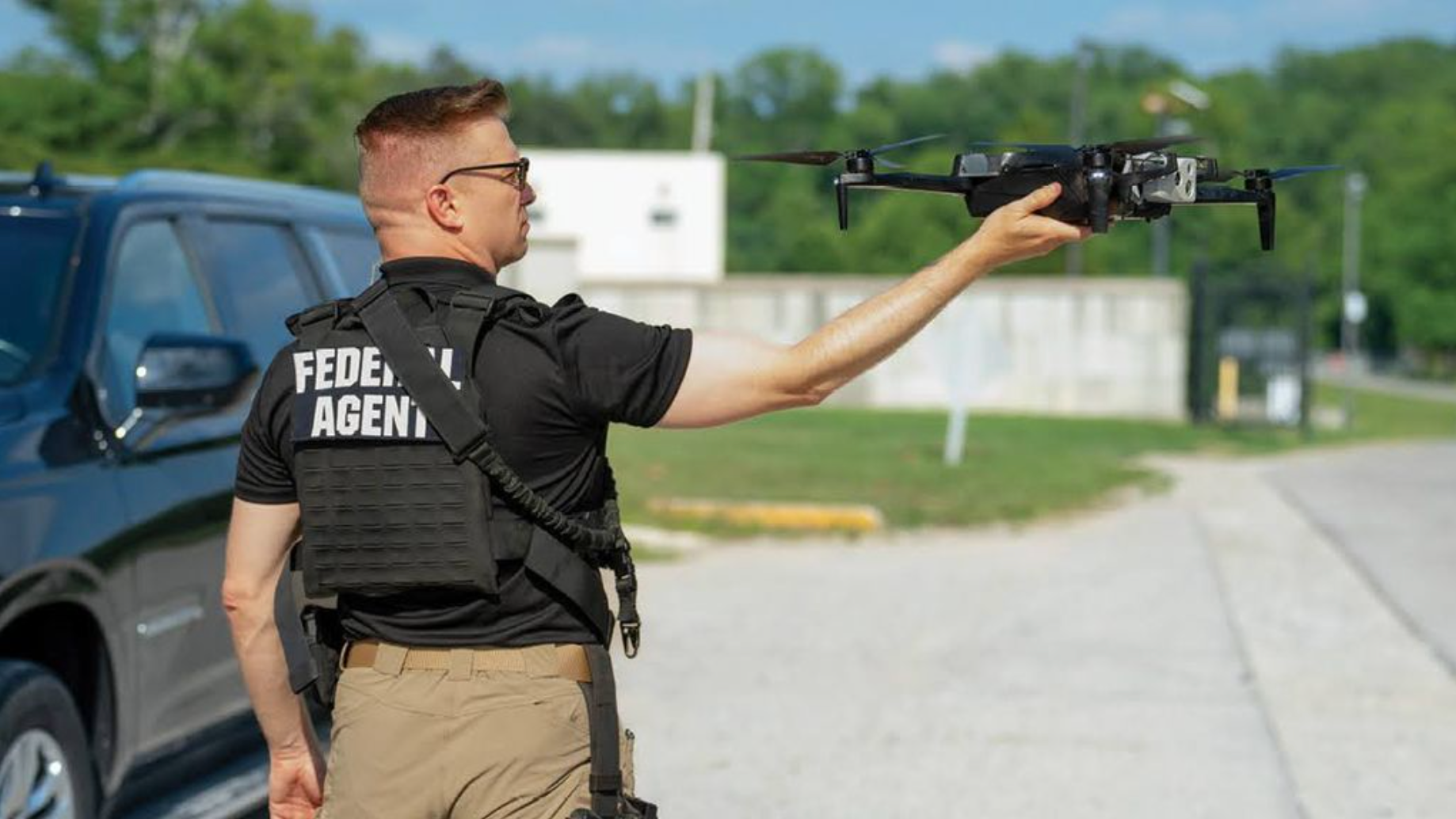
Different types of agencies are using drones for their operations. Each has unique needs, but all benefit from drones' advanced capabilities.
Defense and military agencies
Defense and military agencies are at the forefront of adopting drone technology for enhanced situational awareness and operational efficiency.
- Army Short Range Reconnaissance Program (SRR)
- Marine Corps Small Unmanned Aircraft Systems (sUAS)
- Defense Innovation Unit (DIU)
Law enforcement
Drones are becoming invaluable for law enforcement and public safety agencies, helping them manage emergencies and enhance security.
Customs and Border Protection (CBP)
CBP uses drones for comprehensive border surveillance, ensuring security, and detecting illegal activities. Its use of Skydio drones enhances its ability to increase area coverage and operator safety, enhance situational awareness and decision-making, and streamline resources by monitoring vast border areas at scale.
Public utilities and infrastructure
Drones are also transforming the way public utilities and infrastructure inspections are conducted, offering safer and more efficient solutions and improving critical infrastructure stability, resilience, and reliability.
- Inspection: Maintenance and inspection teams can get the desired views with less risk. Inspection drones capture the data, while advanced AI-driven autonomous technology enables operators to avoid obstacles automatically. Drones from Skydio ensure that staff, regardless of skill level, can fly confidently in complex environments and quickly scale your drone inspection program. Skydio drones can also collect high-quality imagery to generate 2D maps and 3D models that inform better maintenance decisions with minimal pre-planning and operator oversight.
- Utilities: Used for monitoring asset health, enhancing efficiency, and reducing risk by inspecting power lines, bridges, and other vital infrastructure, ensuring their safety and functionality. Drones allow monitoring more frequently, in greater detail, and from vantage points impossible to reach by foot. With 360-degree monitoring powered by AI drones, you can get smarter and more efficient with every inspection. And significantly improve system compliance with industry safety standards.
What kind of drone program do you need
Skydio’s drone programs are designed to meet the specific needs of various defense and government operations. The initial use of drone technology for defense and military was mainly for tactical ISR. However, the ability to take advantage of advanced AI, onboard processing, sensors, and the versatility of drone systems is quickly expanding. Defense and the public sector can now use drones for non-tactical missions such as base security, monitoring assets infrastructure health, ship inspections, logistics support, site surveys, etc. Here are a few examples of defense and government programs leveraging the capabilities of Skydio drones.
Army short range reconnaissance
The program equips Soldiers with U.S.-manufactured, high-performance drones that help increase situational awareness, safety, and security. The SRR program is designed to equip soldiers with a rapidly deployable small UAS solution to conduct intelligence, reconnaissance and surveillance (ISR) activities. Skydio is the solution provider of record for the U.S. Army’s Short Range Reconnaissance program.
The newest version of the Skydio drone for defense – X10D -- exceeds SRR specifications for tactical performance and was specifically designed to create tactical advantages for soldiers at any time of day or night, 24/7 operations, and autonomous, obstacle-avoidance flight in zero-light environments. It is also the first small UAS to integrate a FLIR Boson+ sensor for thermal imaging quality and more accurate radiometric readings in any location.
Marine Corps Small Unit Remote Scouting
Drones provide Marines with capabilities such as Small Unit Remote Scouting, delivering the means to see the battlespace beyond line-of-sight restrictions. This includes access to organic, real-time Reconnaissance, Surveillance, and Target Acquisition (RSTA) and battle damage assessment at the small unit level. Skydio supports the Marine Corps with a multi-sensor aerial system that provides immediate ISR (Intelligence, Surveillance, Reconnaissance) capabilities to units on the ground.
In addition, Skydio X10D is tailored to support the Marine Corps needs through sophisticated sensors and AI that can perform in diverse environments. This ensures reliable operations and accurate data collection. It also has a multi-band radio with dynamic frequency selection, making it link jamming-resistant, and a visual navigation system that enables it to fly fully autonomously without GPS.
Defense innovation unit
As part of its autonomy portfolio, the DIU helps rapidly prototype and scale commercial UAS / drone technology for the Department of Defense. The DIU maintains a CAC card-enabled Drone Database Hub where you can access ATOs and additional information about DoD-approved drones available for government purchase. The drones listed comply with section 848 of the FY20 NDAA, section 817 of the FY23 NDAA, and the American Security Drone Act.
Skydio works closely with the DIU to acquire autonomous drones as simply as possible for the DoD and has established a National Defense Authorization Act-compliant supply chain to ensure trustworthy sourcing for production at scale. Skydio also supports DIU’s Artificial Intelligence for Small Unit Maneuver (AISUM) system, which uses autonomous technology to enable a single operator to simultaneously manage a heterogeneous group of drones.
How to procure Skydio for your defense drone program.
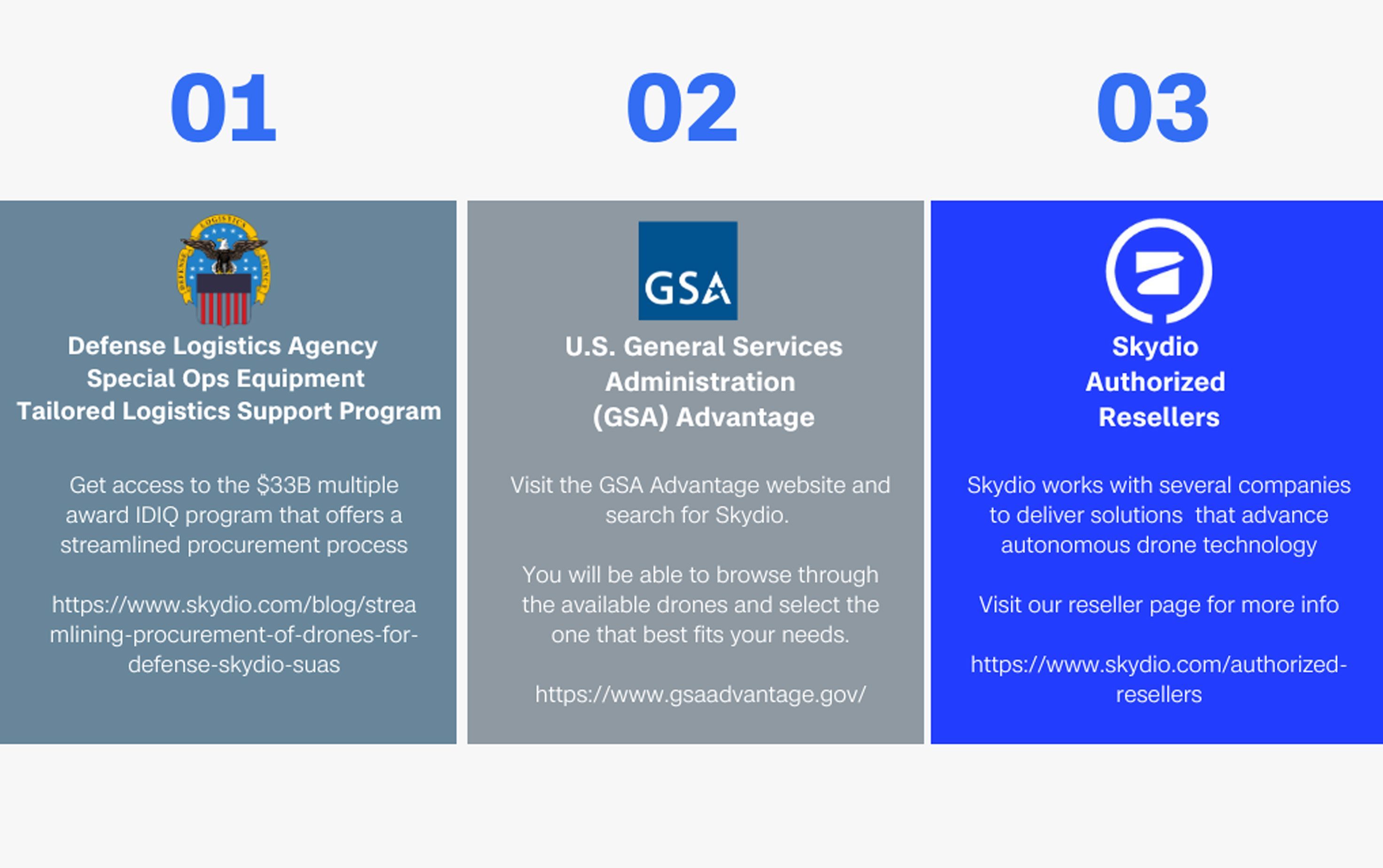
Drones aim to reduce the cognitive load on operators so they can focus on important tasks and uncover important data. Purchasing drones should be easy as well. If you are interested in rapidly purchasing Skydio drones, there are two main procurement paths you can take:
- The Defense Logistics Agency (DLA) Special Operations Equipment (SOE) Tailored Logistics Support (TLS) Program. Follow the steps on this page to access the $33B multiple award IDIQ program that offers a streamlined procurement process.
- U.S. General Services Administration (GSA) Advantage. To purchase Skydio drones through GSA Advantage, visit the GSA Advantage website and search for Skydio. You can browse the available drones and select the one that best fits your needs.
- Skydio Authorized Resellers. Skydio works with several companies that deliver solutions centered on advancing the autonomous drone technology from Skydio. Here’s a list of our resellers for more information.
Launching your government drone program.
Launching a government drone program involves several key steps. Here’s a roadmap to guide you through the process.
Step 1: Define your objectives
Identify the primary goals and missions that drones will support within your agency. These could range from enhancing base or facility security to improving how you inspect and maintain high-value equipment such as aircraft, ships, and depots.
Step 2: Choose the right drone platform
Evaluate the available drone platforms based on your operational requirements. Consider factors such as autonomy, sensor capabilities, range, and durability. Skydio offers a range of drones designed to meet diverse needs for everything from base security to drones as first responders, 3D scans and mapping of facilities, advanced tactical ISR, remote operations, autonomous route planning, Beyond Visual Line of Site (BVLOS) over 5G, and more.
Step 3: Secure funding and approvals
Drone programs can greatly reduce overall program costs by increasing the performance of existing operations, surfacing data that prevents cost overruns, outages, or equipment failure, enhancing the safety of personnel, and streamlining the time required to complete previously human-intensive tasks. These factors should be considered when navigating procurement and securing funding/approvals. Several programs are available to government customers to offset or help support the cost of setting up a new program, such as the Defense Innovation Unit and The Defense Logistics Agency Tailored Logistics Support Program. Skydio and our partner ecosystem can help you navigate these options as well.
Step 4: Training and certification
Ensure your personnel are adequately trained to operate the drones. Skydio offers comprehensive training programs, including the Skydio Drone Academy, which certifies operators to effectively utilize the drone's capabilities.
At Skydio, we do more than build drones. We intend to help our customers build successful drone programs that solve their most important challenges. We’ve developed a robust set of services and support offerings, from training to regulatory consulting, and we’ve supported our customers in getting over 20 waivers for flights beyond visual line of sight (BVLOS).
Step 5: Deployment and Integration
Deploy the drones within your operational framework, integrating them into existing systems and workflows. Establish data management, maintenance, and continuous improvement protocols to maximize the drones' effectiveness. Skydio X10D complies with federal standards, including the Robotics and Autonomous Systems – Air (RAS-A) Interoperability Profile (IoP), an open, modular platform supporting third-party applications. RAS-A compliance and open MAVLINK protocol enable the use of third-party and government-owned flight application software. Modular ports allow operators to quickly swap attachments for maximum in-field versatility. We also offer Skydio Extend - a set of APIs, workflows, and integrations that make Skydio an open platform and deliver end-to-end solutions for customers with partners like Axon, ESRI, and Trimble.
Step 6: Evaluation and expansion
Regularly evaluate the drone program's performance against your defined objectives. Use insights and data to refine operations and consider expanding the program to cover additional missions and applications.
Ensure commitment to security.
Security is paramount when establishing a defense or government drone program; remember that security is critical in communicating, collecting, and protecting data. Consider your drone program’s alignment with the FBI and CIA's UAS Cybersecurity Recommendations, as well as the following specifications offered by the drones and systems you use:
- Secure-by-Design: Drone products and systems are built with secure boot features, ensuring only Skydio-signed code can operate on the drones.
- Proactive Development and Updates: Ensures regular third-party penetration testing and prompt remediation of vulnerabilities.
- Advanced Encryption: Utilizes AES-256 encryption for data in transit and at rest.
- Network Segmentation and Zero Trust: Minimizes the impact of cyberattacks through continuous verification and authentication protocols.
- Supply Chain Integrity: Maintain stringent security policies for all components, ensuring NDAA compliance and transparency.
- External Audits: The company conducts regular audits for ISO 27001:2022 and SOC 2 Type II compliance to ensure adherence to the highest security standards.
Final thoughts.
If investing in an autonomous drone solution, ensure you plan for a future-proof approach, incorporating modular designs that can be easily upgraded as new technologies emerge. This ensures that your investment remains relevant and effective, adapting to evolving defense needs.
Launching a government drone program involves careful planning, strategic procurement, and continuous evaluation. Innovative, reliable, and scalable solutions are paramount in today's dynamic defense landscape. Defense and government operations require real-time intelligence, persistent surveillance, and the ability to adapt to various operational environments.
Skydio’s solutions are designed to maximize operational effectiveness, providing reliable and scalable tools that enhance your mission capabilities. With Skydio, you can be assured that your investment in drone technology will deliver significant returns in terms of security, efficiency, and strategic advantage.
